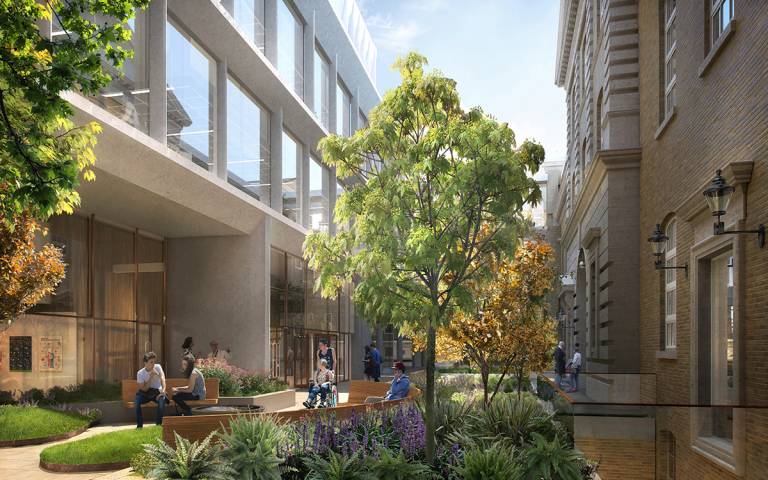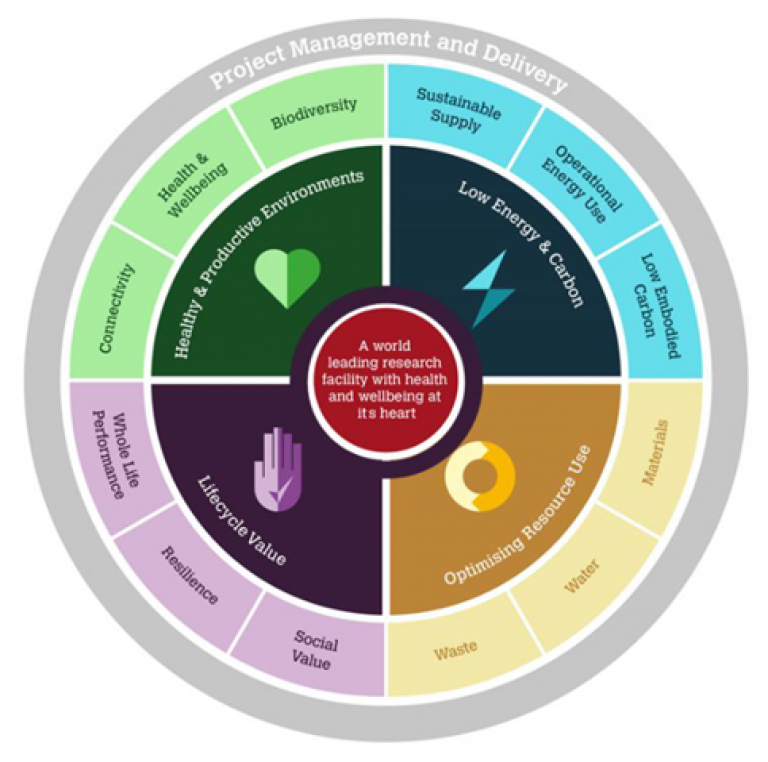Neuroscience building on track for BREEAM Outstanding certification
This reflects a high performance across a number of areas of sustainability – including energy; water; health and wellbeing; materials; waste; and ecology. Less than the top 1% of buildings achieve this certification.

The development has been guided by the following principles:
- Low Energy and Carbon: Achieve an exemplar low carbon development and make a significant contribution to the reduction of carbon emissions.
- Optimising Resource Use: Utilise natural resources in the most efficient and economical way possible, applying circular economy principles to minimise waste and create new business opportunities across the redevelopment site.
- Healthy and Productive Environments: Provide a healthy, comfortable, inclusive and safe building that supports visitors’ and staff wellbeing and provides the best possible environment for world-class research.
- Lifecycle Value: Understand and prepare for long-term climate change impacts and scenarios that will impact the development. Build-in adaptability, flexibility and ‘reconfigurability’, to accommodate changes in the needs of the development over time.

The project’s approach to sustainability is summarised below:
- BREEAM: The building is on track for a BREEAM ‘Outstanding’ (interim certification has been achieved) which demonstrates exemplary environmental performance and surpasses initial project targets and requirements.
- Energy Efficiency: The energy strategy has placed a high priority on reducing the building energy demand using highly efficient building fabric; and low-energy mechanical and electrical systems. Renewable energy is generated using multiple PV arrays.
- Water Efficiency: Water consumption will be minimised through the specification of highly water efficient sanitary fittings.
- Flooding: Peak surface water run-off from the site will be managed through blue/green roofs, permeable paving and below-ground storage tanks.
- Sustainable Use of Materials: Efficient use of resources, maximising recycled content of material and specification of durable materials have been prioritised to reduce whole life embodied carbon impacts.
- Biodiversity: Green roofs will be provided while tree canopies in courtyards provide new habitats. Bird boxes will also to be provided.
- Adaption to Climate Change: Strategies for dealing with overheating and flood risk are incorporated within the design.
 Close
Close

